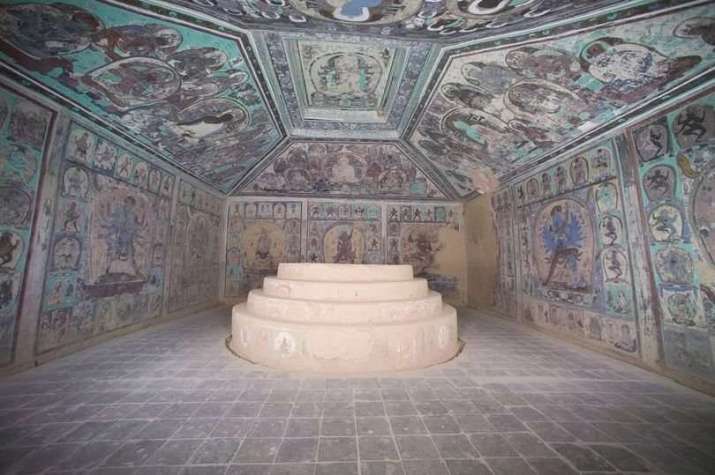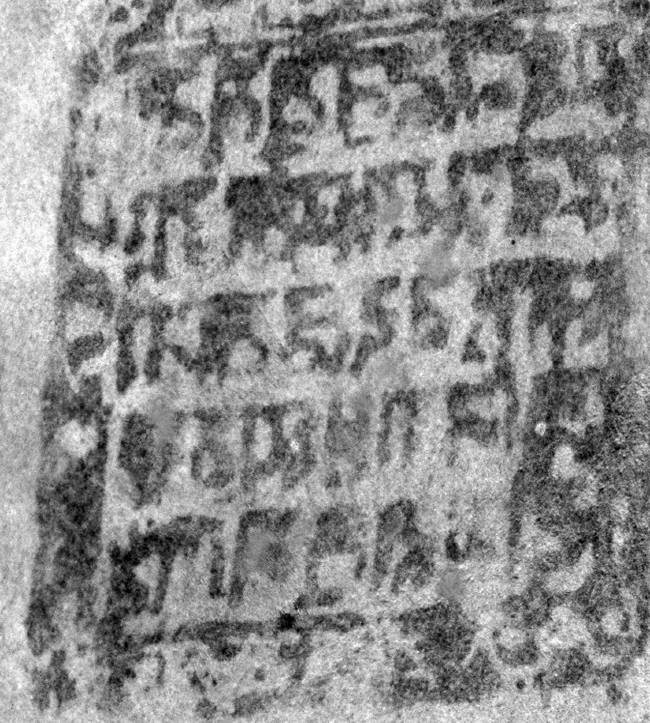NEWS
Researchers Uncover Hidden History in China’s Ancient Dunhuang Caves
 From nonttinghampost.com
From nonttinghampost.comA team of researchers led by Nottingham Trent University’s Imaging and Sensing for Archaeology, Art history and Conservation (ISAAC) Lab in collaboration with the Dunhuang Research Academy in China and The British Library have discovered a mistake made in the artwork of Dunhuang’s Mogao Caves dating back some 700 years. The text appears to be similar to scripts found in other caves dating to the 13th-14th century Mongol/Yuan period, a fact that has led researchers to believe that this too is from the same period.
Prior to the discovery, estimated dating of art in the cave ranged across 500 years, from the ninth century Tibetan period, to the 11th-13th century Tangut period, to the Mongol/Yuan period. Paintings from other caves have been dated to as early as the fourth century and as late as the 14th.
The discovery comes from Cave 465, where text beneath the foot of one of the Buddha images is flipped backwards, suggesting that the text was was accidentally adhered face down.
Prof. Haida Liang, head of the Imaging and Sensing for Archaeology, Art History & Conservation research group at Nottingham Trent University in England said: “This has been a huge debate for many years, but now our analysis has enabled us to date this cave with much more certainty than ever before.” She continued: “The written paper prints seem to have been produced and pasted on the ceiling during the construction of the cave temple as part of a consecration ritual. That was a fascinating discovery, we believe it was a mistake, perhaps the workmen who put it up didn’t understand Sanskrit.” (Nottinghamshire Live)

From ntu.ac.uk
The text in question is barely visible at all, in contrast to correctly oriented pieces of text found below the other Buddha images in the room. Researchers were able to read the text, finding the Buddhist Sanskrit phrase known as the “Summary of Dependent Origination,” saying, “All things arise from causes.”
The work involved the practice of palaeography—the study of how writing evolves over time—to recognize certain letters in the text that were not written in ways consistent with earlier forms of writing. This was combined with an analysis of the paint pigment used, which suggested materials most likely dating to the Mongol/Yuan period.
The materials identified in white paint, gypsum and dolomite, were not found in any other caves dated to the Tibetan period, while the yellow material, orpiment, was not found in any of the Tangut period caves. Further, in the Tibetan period cave that did have yellow paint, yellow ochre pigment was used instead of orpiment.
According to Liang, “With regards to the colors used, our work relies on understanding what is a particular mix for a particular period. Each material mix is a fingerprint. Taking into consideration all the evidence that we have been able to gather as part of this work, the date of the Cave 465 wall paintings must be from the late 12th to the 13th century.” (Nottinghamshire Live)
Dunhuang is a city in northwestern China, on the edge of the Taklamakan desert of Central Asia. It has long been an important stop along the Silk Road, first established in the Han dynasty (207 BCE–220 CE). Trade on the Silk Road that passed through Dunhuang was a major factor in the development of civilizations in China, the Indian subcontinent, Persia, Europe, Africa, and Arabia. It also aided in cultural and philosophical exchanges between cultures and religions including Buddhism, Christianity, Judaism, and Islam.
See more
Nottingham Trent University researchers uncover secrets of 700-year-old Buddhist cave temple (Nottinghamshire Live)
Scientists reveal 700-year-old cave’s hidden secrets (Nottingham Trent University)
Related news from Buddhistdoor Global
English Version of Digital Dunhuang Offers Virtual Tour of Mogao Caves
Dunhuang Academy Exhibition Showcases Culture of Early Tibet
Dunhuang Airport to Close for Expansion as Popularity of Mogao Caves Takes Off
Record Tourist Numbers Threaten Ancient Buddhist Art in China’s Mogao Caves
Ancient Hygiene Habits Show Silk Road Facilitated Passage of Disease, as Well as Commerce and Buddhism
Archaeological Find Reveals New Silk Road Route
Related features from Buddhistdoor Global
Hong Kong Heritage Museum Displays Digital Reproductions of the Mogao Caves of Dunhuang
From the Gobi to the Getty: Buddhist Art from Dunhuang on View in Los Angeles
Dance at Dunhuang: Part One
Dance at Dunhuang: Part Two – The Case for the Feitian
Dance at Dunhuang: Part Three – The Sogdian Whirl
Lee Mei-yin holds the keys to a renaissance in appreciating Dunhuang and Buddhist art














